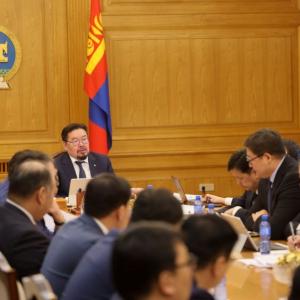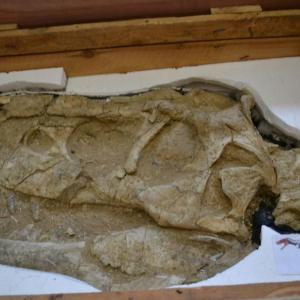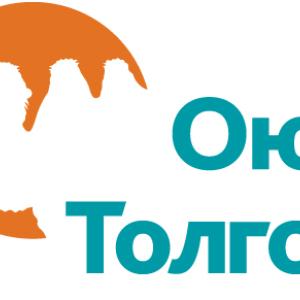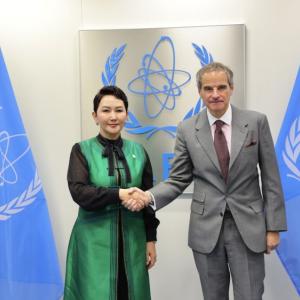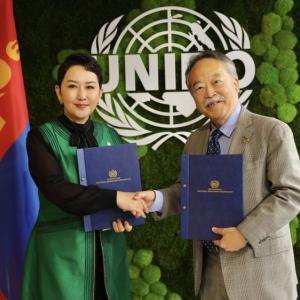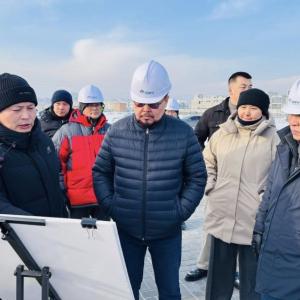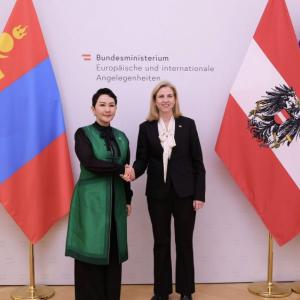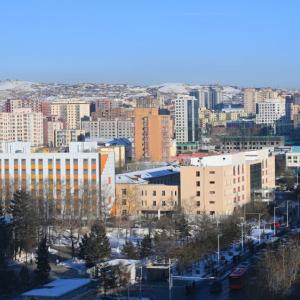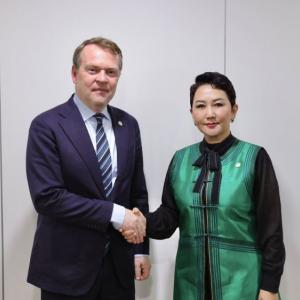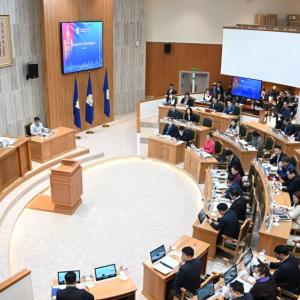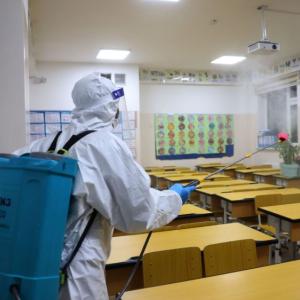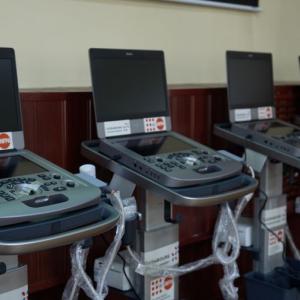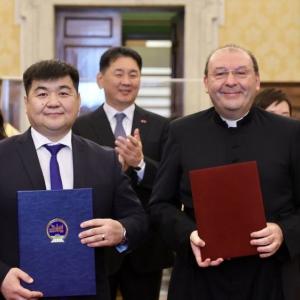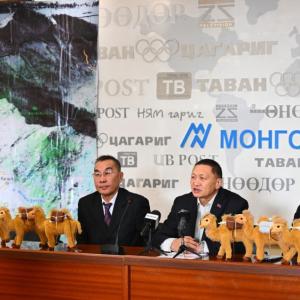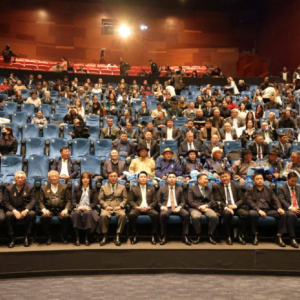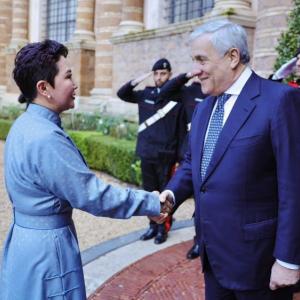Mongolia to launch satellite into space next year
The Mongol Messenger
Mongolian students are making the first Mongolian national satellite within the BIRDS project
The day is approaching when the space technology is to become a mundane use of daily life. As for Mongolia, a country that is sparsely populated in a vast territory with extreme weather conditions where its people maintain their lives in accordance with climate and natural environment changes, a necessity arises spontaneously to use satellite information. The inevitable need to have trained national specialists in this field also emerges in Mongolia. Launching a satellite to a space is not only a success card of a university, but also a declaration of any country’s potential.
Concerning this, the government has adopted a program to use space technology in 2012. Also, a long-term project to train 1000 engineers in cooperation with Japanese higher institutions and universities is currently running. In the scope of the project, a total of ten teams are carrying out research projects of engineering at the National University of Mongolia (NUM). One of them is a satellite research team headed by Dr. Tsolmon Renchin (who is also a professor at the NUM).
The Joint Global Multi-Nation BIRDS Satellite project - acronym as “BIRDS project” - a cross-border interdisciplinary satellite project, composed of the deans of universities, researchers, professors and graduate and postgraduate students are working at the Kyushu Institute of Technology (KIT), in Fukuoka Prefecture of Japan. The two-year project is for non-space faring countries supported by Japan and is participated by countries such as Mongolia, Ghana, Nigeria and Bangladesh. The name “BIRDS” comes from the official title: Joint Global Multi-Nation Birds Project, or JGMNB Project. The first letter in each word also represents the nations in this project.
During the project, the engineering graduate students will be taught the entire process of launching to a space, from mission planning, to hardware design, to spacecraft testing, to launching, and to in-orbit operation of a satellite. They will design, develop and operate 5 units of identical 1U CubeSats (a type of miniaturized satellite for space research - 1kg, 10cm cubic) belonging to the five participating countries. 15 students from the 7 participating countries who belong to Graduate School of Engineering of the Kyushu Institute of Technology and enrolled as a Master or Doctoral degree students in the Space Engineering International Course are executing this project.
Three Mongolian students pursuing a doctorate degree at the Kyushu Institute of Technology, D.Erdenebaatar, D.Amartuvshin and T.Turtogtokh are in the team to build the first Mongolian satellite. The roles of our engineers in the projects are divided in designing and developing a camera subsystem for the BIRDS satellites, in Electrical Power System in Productive section and Interface management in non-productive section of Satellite Development as well as in On-board Computer (OBC) system to provide reliable and proper operation of the brain for the satellites. Technical solutions of the satellites are generally completed and soon to be approved and the final test will be conducted before putting a satellite into a space.
Satellites operating in a space means the satellite is able to operate reliably for at least six months to transmit information by circulating through an orbit around the Earth with an altitude around 400 km. The satellite being developed by the Birds project will the first national satellite of Mongolia and is scheduled to be launched on May next year. The main objectives of the Mongolian satellite is to take a photograph of their homeland Mongolia via on-board camera and broadcasting Mongolian traditional musical instrument of up to three minutes from a satellite to a radio receiver that could be played from anywhere in the world. The 5 satellites of Mongolia, Japan, Ghana, Nigeria and Bangladesh will be delivered to a launch vehicle of the Japan Aerospace Exploration Agency, JAXA from the Tanegashima Island, south of the Kyushu and then will be sent for a ride to outer space from the International Space Station.
The UNESCO’s project for space technology of the developing countries targeted the National University of Mongolia considering its opportunity of consistent development. Apart from its abundance of significances to the scientific research, launching a CubeSat give a myriad of benefit to a nation’s human resources, defense and security development and a foundation of the space technology of that country. There are three ways to acquire such technology within a country. First, to purchase a CubeSat that is already fully integrated in a developed country. Second, designing a CubeSat using its domestic human resource capacity and produce the satellite in a developed country according to the design. Third, build the satellite by doing all levels of satellite development works at home. First of all, Mongolia has a full potential to design and build such a not-expensive miniaturized satellite domestically for space research. Therefore, it has set a goal to create a design of medium-sized satellite by 2026 through training national staff and specialists. Mongolia is working to build and launch 50x50 cm satellite with sensors installed during 2020-2023, if the BIRDS project completes successfully. This would bring much more opportunities and more achievements to the Mongolian science field and previous research and studies.
Once the project team puts CubeSats into the orbit, they will communicate with the satellite from the ground stations built at the territories of each of the five countries. One function of the satellites moving around the 400 km orbit around the earth are, during the mission, detecting single event latch-up (SEL) occurrences and identifying the correlation of SEL occurrences with each of the satellite’s location and time of communication to the ground stations and other parameters. The CubeSat, the BIRDS project team that is being built by a cooperation between the multinational universities is able to operate in space for from six months to two years.
Over the past ten years, the Kyushu Institute of Technology has launched six satellites into a space and enjoys a high reputation in Japan by its equipment, environment and laboratories for research in the fields of science and technology. The KIT has created a similar environment as the outer space for the project team to carry-out their experiments, including satellite vibration test during launching, vacuum environment test and surviving in the rapid change of temperature. Although, the NUM is participating formally in the project from the Mongolian side, any individual or organization who are interested in the space technology can join the KIT projects.
The BIRDS member Turtogtokh, who is studying at the KIT for a doctorate degree is responsible for the On-board Computer (OBC) system providing reliable and proper operation of brain for the satellites. OBC has high responsibility for satellite’s properly working in space and It’s duty is not only execution of commands from ground station but also collecting and managing housekeeping data, time and schedule, and controlling subsystems such as payloads, antenna deployment and electrical power supply.
Another team member Erdenebaatar, who is in charge of Electrical Power System in Productive section and Interface management in non-productive section of Satellite Development, launched a satellite named ‘Hhoryu-4’ (with a launch mass of 10 kg) in 2015 within a project participated by 45 students from 18 countries under the guidance of Prof. Mengu Cho.
Apart from the three Mongolian engineers, T.Begsuren also has worked in the management team of the project. Begzsuren had studied at the NUM and the Graduate School of Engineering of the Hokkaido University researching on space engineering, design of real satellite and telecommunication subsystem. Around USD 200 thousand is required for attending in the project. The Government of Mongolia has contributed USD 100 thousand and the NUM for Tgs 100 million and the remaining was accumulated from donations of the public. The first Mongolian in space J.Gurragchaa became the first person to donate for the project from Mongolia and had expressed that he will be supporting the project in all spheres.
This project is a novel way of Mongolia to bring its natural science and space technology development to an upper level. Even in the future, the independent system of space technology of Mongolia would be of significance to the national security issues.
Photo source: http://birds.ele.kyutech.ac.jp/
The article is featured in the Mongolia Today magazine's issue No. 3 for July-September 2016.
 Ulaanbaatar
Ulaanbaatar








